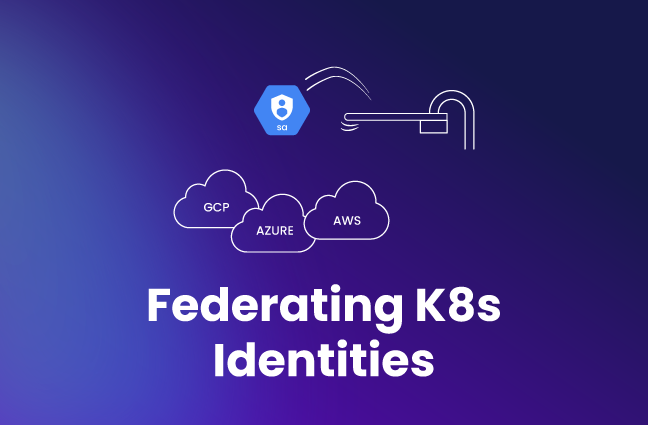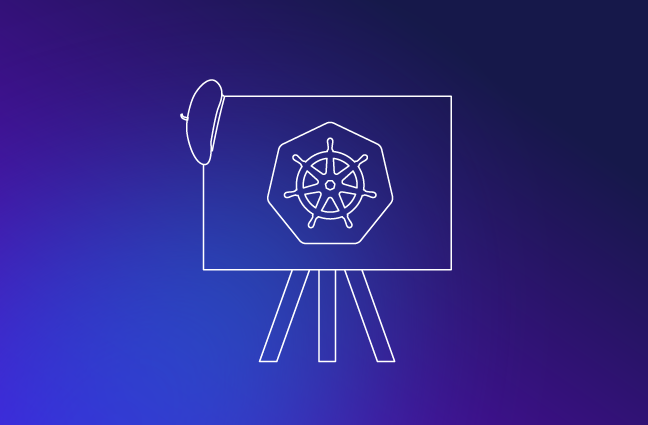What Is Kubernetes Security Posture Management (KSPM)?
KSPM is a security category that enables management of vulnerabilities, misconfigurations and compliance in cloud-based Kubernetes environments

KSPM is a cloud security category that addresses the essential need to manage vulnerabilities, prevent misconfigurations and maintain compliance in cloud-based Kubernetes environments. KSPM capabilities that integrate with CSPM and fuller cloud security platforms offer more accurate and effective risk detection, prioritization and remediation.
What Is a KSPM Solution?
A Kubernetes Security Posture Management (KSPM) solution is purpose-built to address the unique and complex security challenges of environments orchestrated by the Kubernetes container orchestration platform. A KSPM solution automates security and compliance in KSPM environments. Ideally, it embeds security best practice in containerized workloads, helping organizations avoid common security pitfalls.
Specifically, KSPM solutions automate monitoring of Kubernetes configuration data, configuration settings, and the internal RBAC and network configuration of Kubernetes clusters. They detect and alert to vulnerabilities and misconfigurations, and non-compliance with Kubernetes policies and best practices. KSPM tools offer remediation integrated in DevOps pipelines for frictionless action and response.
KSPM tools provide a user experience aligned with the needs of Kubernetes administrators and security professionals, with intuitive dashboards and prioritized findings for quickly understanding the security posture of their Kubernetes clusters and making informed decisions.
What Are the Benefits of a Kubernetes Security Posture Management Solution?
KSPM solutions offer many benefits:
- Holistic visibility into all Kubernetes resources in your multicloud environment
- Risk prioritization without compromising performance
- Minimized risk of breaches and sensitive data exposure by detecting and remediating Kubernetes workload misconfigurations, vulnerabilities and policy violations
- Least privilege permissions enforcement for Kubernetes RBAC
- Automated Kubernetes compliance monitoring and reporting, and policy-driven governance
- Accelerated incident response
Adopting KSPM capabilities helps organizations build security best practice and access controls in their Kubernetes environments.
Who Needs Kubernetes Security Posture Management?
The combined complexity of cloud, containers and Kubernetes orchestration makes Kubernetes environments prone to misconfigurations and vulnerabilities that threat actors can exploit to access sensitive data and assets. Kubernetes environments also need to stay compliant with GDPR, PCI DSS, ISO 27001, NIST and other regulations, and specific CIS benchmarks.
A 2021 Red Hat State of Kubernetes Security Report found that 59% of respondents – from more than 300 DevOps, engineering and security professionals – identified unaddressed security and compliance risk to containers as a top concern.
Several available tools cover security posture management in the cloud. Cloud Security Posture Management (CSPM) tools identify and mitigate cloud misconfigurations for an organization’s cloud infrastructure and audit compliance against industry standards and security benchmarks. Kubernetes Security Posture Management (KSPM) tools identify and mitigate Kubernetes misconfigurations across an organization’s Kubernetes resources including clusters, nodes, namespaces, deployments, servers and service accounts, and networking between pods, across multicloud environments. SaaS Security Posture Management (SSPM) tools identify and mitigate misconfigurations and faulty interconnections between SaaS applications such as Salesforce and Slack, and Office 365.
When it comes to securing container workloads: Cloud Workload Protection (CWP) tools scan cloud containers but for the most part can’t see the configuration data inside the containers or the Kubernetes components managing them to offer the visibility and control to secure Kubernetes environments in a complex multicloud framework.
Of these solutions, only KSPM offers security posture and compliance for Kubernetes environments. Industry analysts recommend that organizations with Kubernetes environments adopt holistic solutions that include KSPM capabilities, preferably integrated with CWP, as well as CSPM, CIEM and other capabilities, under one cloud security umbrella, to achieve accurately prioritized and effective Kuberentes security.
Key Components of a KSPM Platform
KSPM tools may comprise different features and capabilities. Most offer:
- Unified visibility into a full Kubernetes inventory. Centralized visibility into all resources and relationships in cloud-managed Kubernetes clusters, across multiple clouds. Integrated with other tools, the inventory can include containers, container images, Kubernetes workloads, VMs, identities, entitlements, and network and cloud configurations.
- Risk prioritization and remediation for Kubernetes environments. Prioritizes risk by analyzing Kubernetes environments for misconfigurations and other security issues, correlated with network exposure, permission levels and other security characteristics. Offers guided remediation sent through standard workflows.
- Analysis of Kubernetes role based access control (RBAC). Can analyze RBAC configuration within a Kubernetes cluster, detecting misconfigurations, and overprivileged and risky permissions.
- Analysis of network configuration of pods and resources. Can analyze publicly facing Kubernetes clusters, revealing risky API access and other insecure network configurations.
- Compliance controls. Scans for compliance with CIS Kubernetes benchmarks for AKS (Azure), EKS (Amazon) and GKE (Google Cloud), and a wide range of industry standards and best practices.
How Does a Kubernetes Security Posture Management Platform Work?
A KSPM platform gathers configuration data from Kubernetes services and components. It then monitors and analyzes the data for risk and against compliance benchmarks. Risk assessment includes extensive queries, including cloud provider APIs and the Kubernetes API for each cluster, assessing network access and permissions. Holistic solutions that integrate CWP scan Kubernetes VMs for container vulnerabilities and can add context from other resources that influences prioritization, resulting in efficiencies. KSPMs provide security, developers and devops with insights about the security posture of their Kubernetes clusters, including vulnerabilities, misconfigurations and RBAC issues such as exposure of sensitive data. Advanced solutions offer auto-remediation of detected threats.
What to Look For in a KSPM Platform?
Whatever KSPM solution you are reviewing be sure it addresses your key use cases, prioritizes findings accurately and, ideally, is part of a comprehensive cloud security platform.
Look for:
- Identity-first IAM risk analysis. Seek out advanced analysis capabilities that monitor and surface risk for all identities (human and service) and permissions in the Kubernetes internal IAM mechanism (RBAC). These capabilities will give you important visibility into any and all permissions granted to Kubernetes workload identities on cloud resources.
- Synergy between KSPM and CWP. Look for solutions able to detect and scan container images deployed on Kubernetes workloads, surface software vulnerabilities and recommend mitigating actions.
- Compliance and governance. Ensure the solution offers compliance mapping to policies, scoring and reports against standards including CIS Kubernetes benchmarks, and governs access with fine-grained policies
- Superior user experience. Look for intuitive features that enable your Kubernetes administrators and security teams to see deeply into their Kubernetes inventory of clusters and resources, quickly grasp the security posture of their Kubernetes clusters and act on remediation recommendations.
- KSPM as part of CNAPP. As per Gartner, lean toward a CNAPP solution, with analysis correlated across Kubernetes, workloads, identities, network, cloud configurations and more, across your cloud environment. You will be able to detect, prioritize and remediate Kubernetes and other security issues before they become real-world problems.
- Shift left with Kubernetes-related Infrastructure as Code (IaC). Seek to be able to resolve Kubernetes misconfigurations and vulnerabilities at source with capabilities for identifying and remediating faulty code components in spinning up Kubernetes resources – and that easily identify the responsible developer.
An effective KSPM solution will equip you to answer questions such as: What are my KSPM workloads, which are misconfigured, which are exposed and how, are any internal RBAC identities overprivileged, and how do I help my engineering ecosystem take action? Usability, context and remediation are key.
What’s the Difference between KSPM and CSPM?
Does CSPM cover KSPM? No. Think of KSPM as CSPM – and more – for Kubernetes. Cloud Security Posture Management solutions focus on providing security and compliance assessments for cloud infrastructure and services. They offer some support for Kubernetes, but cannot contend with the Kubernetes ecosystem, resulting in incomplete coverage and undetected risks. KSPM’s internal access controls (RBAC) make identity an important element of any Kubernetes security solution - especially since identity is the number one attack vector in modern architectures. CSPM does not protect the identity vector. Gartner notes that together the two sets of capabilities give a full control plane picture – CSPM offers the cloud configuration insights, KSPM offers the Kubernetes stack insights.
What’s the Difference between KSPM and CNAPP?
KSPM capabilities are a key pillar of Cloud-Native Application Protection Platforms (CNAPP), alongside other essential cloud security lifecycle needs including cloud security protection management (CSPM), cloud workload protection (CWP), cloud identity entitlement management (CIEM), infrastructure as code (IaC) security and network configuration monitoring. Used alone, KSPM solutions see deeply into Kubernetes components. When KSPM is combined with other cloud security capabilities, a holistic, correlated understanding of Kubernetes related risk – and how to remediate it – surfaces that enables organizations to dramatically improve Kubernetes security posture and avoid common mistakes when deploying Kubernetes in production. For example, a solution providing both CWP and KSPM offers synergistic value by being able to detect and scan container images on Kubernetes workloads for software vulnerabilities.




